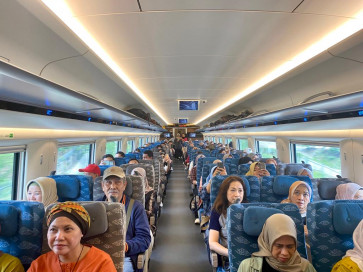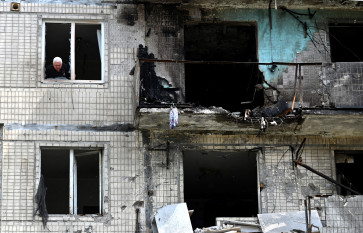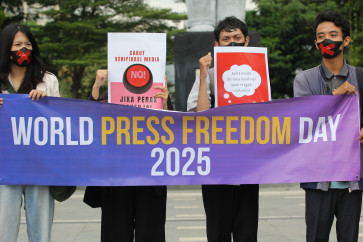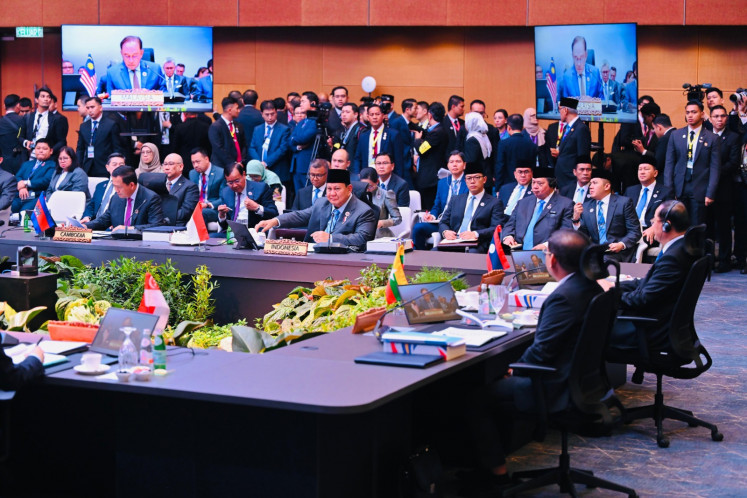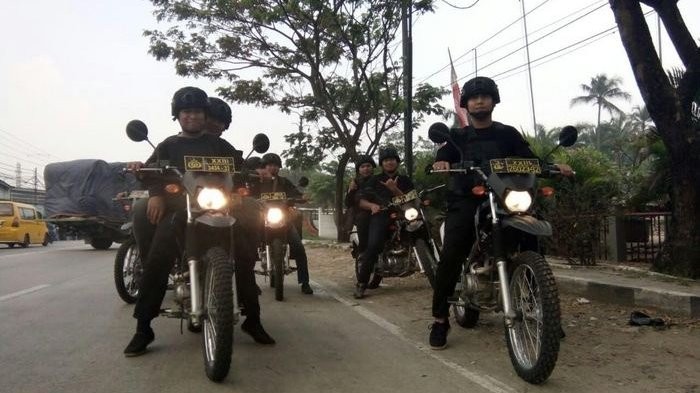Arts exchange to strenghten ties: US artists
The exchange of performing arts between American and Indonesian performers and artists could help strengthen the relationship between people in the two countries, according to American artists who have been touring Indonesia
Change text size
Gift Premium Articles
to Anyone

T
he exchange of performing arts between American and Indonesian performers and artists could help strengthen the relationship between people in the two countries, according to American artists who have been touring Indonesia.
The 10 performing arts presenters from the US concluded their tour of Indonesia in Yogyakarta on Sunday.
Since Feb. 13, they have visited Jakarta, Surakarta (Central Java), Yogyakarta and Bali.
“As negative aspects tend to dominate headlines, I think this is a positive view on how we need each other, how we want to know more about Indonesia and the Indonesian artists,” Rachel Cooper of the New York-based Asia Society told The Jakarta Post in Yogyakarta.
She added the visit was basically about being open and being able to listen to each other.
“When we’re together with people, we can listen in a different way than what we see on television
or movies.”
The visit was jointly organized by the Asia Society, the Boston-based New England Foundation for the Arts (NEFA) and the Jakarta-based Kelola Foundation.
The participants comprised directors, curators, program managers and producers representing noted art centers, museums and theaters across the US.
Among them were the Walker Art Center (Minneapolis), Hopkins Center (Hanover), Yerba Buena Center for the Arts (San Francisco) and Museum of Contemporary Art (Chicago).
The visiting group was exposed to 40 works of both traditional and contemporary Indonesian performing arts.
In Jakarta, they were presented with traditional Cirebon mask dance of Wangi Indriyah from Indramayu and traditional martial arts performance by Nan Jombang group of Padangpanjang.
While in Surakarta, Yogyakarta and Bali, they witnessed various contemporary art performances.
Walker Art Center’s curator Philip Bither said art and culture could play a very critical role when a tragedy happened, for example in the aftermath of the 9/11 terrorist bomb attacks.
“Understanding that a tragedy sometimes is the result of a misunderstanding or preconception, people working in the field of art and culture try to get ahead of it by having more exchange or interaction.”
Bither added watching performances and thus getting a sense of how a country’s cultural richness could rectify negative stereotypes borne from a lack of knowledge.
Executive director of Yerba Buena Center for the Arts, Ken Foster, agreed, saying that the 9/11 tragedy had forced many of the American public to learn more about other parts of the world.
NEFA’s executive director Rebecca Blunk said that what the group did essentially complimented both countries’ governments diplomatic relations activities.
“What we’re doing could reinforce or open the way for diplomatic work.”

